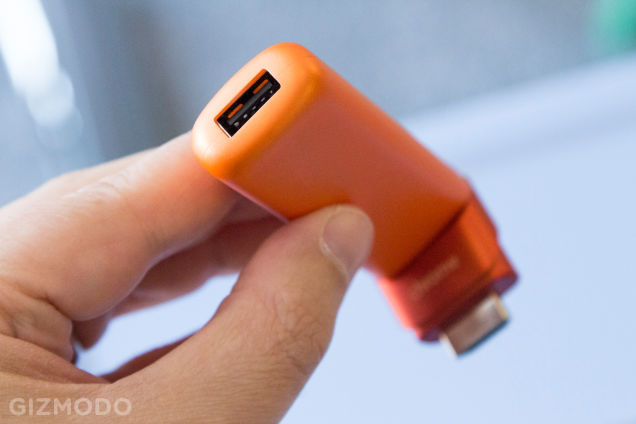Chromebits and Critical Media Literacy
A useful critical media literacy skill is to identify and reflect upon the assumptions that a media text is making about its audience.
Google and Asus will release the Chromebit in the summer of 2015.
The device is a Chrome PC-on-a-stick that plugs into a monitor’s or TV’s HDMI port. Its price, about $100.
A $100 PC has been a wishlist item since Nicholas Negroponte proposed a $100 laptop in the early 2000s. Negroponte’s purpose was to provide computer access to people with limited financial means or in technically underserved locales. He especially wanted to support disadvantaged developing-world students.
What I would like to explore is the assumptions that the Chromebit makes about schools and its student users, and how those assumptions might fit with the realities of usage.
One exciting aspect of the Chromebit is how it might help school districts repurpose their aging and failing computers. Obsolescence is a constant hazard for educational tech, and there are many classrooms with dilapidated/outdated computers. It would be wonderful if schools could rejuvenate old desk-top computers for $100 a pop.
But there are assumptions built into the Chromebit that might cancel its implementation.
Assumption 1. Hardware
The historic computer monitor interface has been a VGA cable for image and a SONY mini cable for audio. An HDMI port carries both audio and video, so is a good choice IF a monitor has an HDMI port. If a monitor lacks an HDMI port (either because its manufacture predates HDMI or a district oped for a cheaper HDMI-free monitor), schools will have to add $50 – $100 for adapters.
The Chromebit will also require wireless keyboards and mouses, $80 at Amazon.ca.
Bottom line? The $100 Chromebit could cost a minimal $260, taxes in, to implement.
Assumption 2. Ergonomics
Because the Chromebit connects to a monitor/TV, it inherits their legacy user context, specifically that the user must be in a fixed position in an AC-powered location. These conditions were transcended—with great celebration—by laptops, whose batteries offered freedom from wall outlets and antenna offered freedom from Ethernet cables.
Students use laptops in class, coffee shops, restaurants, malls, on transit, at home, etc. The Chromebit eliminates or restricts these options and, therefore, eliminates or restricts learning opportunities.
Google has also announced a $149 Chromebook. Considering that a Chromebook would include a screen, keyboard and trackpad on the hardware side and be fully portable on the ergonomic side, it seems that schools that want to maximize student learning would choose a Chromebook over a Chromebit.
Students might enjoy a discussion of the assumptions that the Chromebit and Chromebook make about school infrastructure and student usage, and how critical media literacy can help them understand and be more strategic about their educational goals and activities.
(These ideas can be equally applied to the Elementary and Secondary classroom – ed.)




